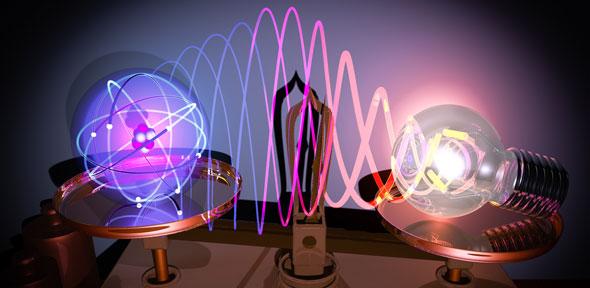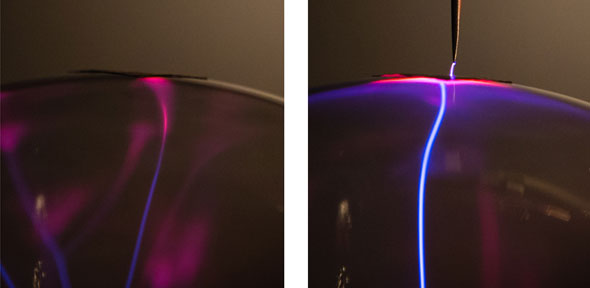
For centuries, scientists believed that light, like all waves, couldn’t be focused down smaller than its wavelength, just under a millionth of a metre. Now, researchers led by the University of Cambridge have created the world’s smallest magnifying glass, which focuses light a billion times more tightly, down to the scale of single atoms.
In collaboration with European colleagues, the team used highly conductive gold nanoparticles to make the world’s tiniest optical cavity, so small that only a single molecule can fit within it. The cavity – called a ‘pico-cavity’ by the researchers – consists of a bump in a gold nanostructure the size of a single atom, and confines light to less than a billionth of a metre. The results, reported in the journal Science, open up new ways to study the interaction of light and matter, including the possibility of making the molecules in the cavity undergo new sorts of chemical reactions, which could enable the development of entirely new types of sensors.
According to the researchers, building nanostructures with single atom control was extremely challenging. “We had to cool our samples to -260°C in order to freeze the scurrying gold atoms,” said Felix Benz, lead author of the study. The researchers shone laser light on the sample to build the pico-cavities, allowing them to watch single atom movement in real time.
“Our models suggested that individual atoms sticking out might act as tiny lightning rods, but focusing light instead of electricity,” said Professor Javier Aizpurua from the Center for Materials Physics in San Sebastian in Spain, who led the theoretical section of this work.

“Even single gold atoms behave just like tiny metallic ball bearings in our experiments, with conducting electrons roaming around, which is very different from their quantum life where electrons are bound to their nucleus,” said Professor Jeremy Baumberg of the NanoPhotonics Centre at Cambridge’s Cavendish Laboratory, who led the research.
The findings have the potential to open a whole new field of light-catalysed chemical reactions, allowing complex molecules to be built from smaller components. Additionally, there is the possibility of new opto-mechanical data storage devices, allowing information to be written and read by light and stored in the form of molecular vibrations.
The research is funded as part of a UK Engineering and Physical Sciences Research Council (EPSRC) investment in the Cambridge NanoPhotonics Centre, as well as the European Research Council (ERC) and the Winton Programme for the Physics of Sustainability, and supported by the Spanish Council for Research (CSIC) and the University of the Basque Country (UPV/EHU).
Reference:
Felix Benz et al. ‘Single-molecule optomechanics in ‘pico-cavities’.’ Science (2016). DOI: 10.1126/science.aah5243
Inset image: The presence of the sharp metal tip on a plasma sphere concentrates the electric field into its vicinity, initiating a spark. Credit: NanoPhotonics Cambridge
Using the strange properties of tiny particles of gold, researchers have concentrated light down smaller than a single atom, letting them look at individual chemical bonds inside molecules, and opening up new ways to study light and matter.

The text in this work is licensed under a Creative Commons Attribution 4.0 International License. For image use please see separate credits above.